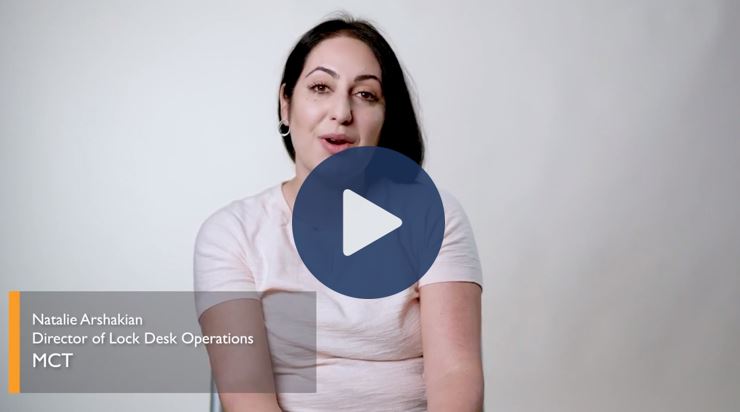Learn the perspectives of top capital markets leaders on the future direction of the housing market, interest rates, market volatility, and the economy as a whole in the wake of tax reform.

This Economic Update Panel recap is from the February 6, 2018 TMBA Southern Secondary Market Conference and features MCT’s COO Phil Rasori along with other industry experts.
This is a recap of the event and contains paraphrasing to put forward the best discussion overview.
TMBA Secondary Conference: Economic Update Panel Discussion
Moderator: Mark Palim, Deputy Chief Economist and Vice President at Fannie Mae
Panelists:
- Rob Branthover, Managing Director at MIAC – Mortgage Industry Advisory Corporation
- Ian Lyngen, Head of Rates Strategy at BMO Capital Markets
- Phil Rasori, Chief Operations Officer at MCT – Mortgage Capital Trading

Pictured from left: Ian Lyngen, Phil Rasori, Rob Branthover, and Mark Palim
Overall Economic Outlook & Recent Market Volatility
The conference began under the cloud of some of the most volatile swings to hit markets in year. The buzz of curiosity around recent volatility and the overall economic forecast for the year guaranteed an interesting panel. The panel moderator, Mark Palim, who leads analysis of macroeconomics with Fannie Mae, started the session with his current economic outlook which was followed by further observations by Ian Lyngen.
Mark Palim, Fannie Mae –
Yesterday’s volatility was something of a test of the newly sworn in Federal Reserve Chairman Jerome Powell by traders. It was also influenced by full employment concerns and potential inflation, which also cause concerns about corporate profits. Is the Fed going to increase rates too fast and kill off non-inflationary growth, or are they going to keep a more reserved pace and remain open to changing their strategy based on market conditions?
If there is an unexpected change in the economy or the financial markets (and there always is), it may influence a public view that the Fed should stop the runoff of their portfolio. If they stay the course too strongly, or appear locked to a rules-based strategy, there is potential for increased market volatility.
Interest rates have been increasing, steadily through 2017 and more rapidly in the last few weeks, and there are three Fed rate increases expected over the course of this year. Despite concerns about limitations to the Mortgage Interest Deduction, the recent tax cut should be a net positive for the housing market due to a vast number of households receiving an increase in discretionary income which could be used for housing. The exception may be some areas with high state and local taxes, or areas particularly strong in the jumbo market. Strong appreciation has also outpaced wage growth and it is expected that the housing supply crisis will be exacerbated.
%
Anticipated Volume Change for 2018 by Fannie Mae
We’ve forecasted volumes to decrease 10% overall this year compared to 2017. Refinances are expected to decrease in this rising rate environment and home price increases are causing a headwind for purchase business.
Ian Lyngen, BMO Capital Markets –
The Fed has already made significant progress in normalizing interest rates. I expect we will spend a very small amount of time with 10 yr Treasury bond yields above 3%. The flattening and potential inversion of the yield curve is something expected to see this year.
Consumers currently represent a record high level of GDP (70%), but the savings rate is near record lows and non-mortgage credit is increasing. We are not going to see a consumer led recession yet, but it could become far more topical towards the end of this year. The Fed has by default become the central bank to the world, so global growth and expectations and are also influencing their decision making. As we go through a global expansion, the US economy is sending money overseas, which often comes back as investment in Treasury bonds which further pushes out the yield curve.
%
Portion of GDP Represented by Consumers, a record high
Questions & Answer Discussion
Following the economic overview, the panelists responded to a series of questions from the moderator and the audience, sharing their perspective on the future of the housing market, mortgage volumes, market volatility, and more.
What are you seeing in terms of volatility and how are behaviors changing in the mortgage market?
Phil Rasori, MCT –
- For the last year we’ve seen an unprecedented period of stability in interest rates, to the point that the vast majority of companies could have floated your pipeline all year with little adverse effect. As a hedge advisor, I could never recommend this risky strategy, but last year it wouldn’t have been particularly harmful. The recent increase in market volatility requires much more vigilance in pipeline management by lenders. Intra-day investor reprices require real time data updates in order to facilitate accurate pricing on new locks as well as successful hedging.
- The key to the hedging strategy here is matching the durations to the incoming locks. ARM production won’t be an in-vogue product if there is an inversion of the yield curve. Purchase money should be strong, refinance money will mostly be going away. As purchase business was already dominant within most of our client base, we actually aren’t expecting to see as much decrease in volumes as has been predicted for the wider market.
- From a pull through perspective, things are going to be interesting. Increasing rates make pull-through more likely as the value of the lower-rate locks in the pipeline increase from the perspective of the borrower. However, this can create artificially high pull-through expectations among lenders which should be checked and carefully managed.
Do you expect any changes in jumbo production overall or in jumbo within specific regions, as a result of recent changes to the Mortgage Interest Deduction or otherwise?
- Robert Branthover, MIAC – The Jumbo market is going to continue to grow, it’s been growing for many years. However, since this product is usually being delivered through best efforts, we hedge advisors aren’t as close to the front lines as you may expect.
- Phil Rasori, MCT – Being from New York and California, we may take issue with some of your positive statements regarding the tax changes earlier. There is also a ton of demand for those 5 year ARM jumbo products among others.
What do you expect for the MSR market in 2018?
- Robert Branthover, MIAC – The MSR market is steadily improving. You’ll expect that aggregators will probably get more aggressive on their pricing, which will make delivery to them more attractive compared to co-issue deals.
What are the downside risks of a market in case rates defy expectations and move back down?
- Ian Lyngen, BMO Capital Markets – We really are in the later part of the expansion; the question is how much longer is the current expansion going to go? Historically, most major recessions have been preceded by a spike in high-yield credit. I will be watching volumes in this sector for clues about a potential downturn. We’re also in an unprecedented period of management of the economy, where the Fed is actively trying to unravel Quantitative Easing. This adds some unpredictability in terms of how they may attempt to manage a potential recession. Corporate profits are another important gauge of a potential recession that I’ll be watching.
What potential impact could bailouts in places in Europe, such as Greece or Italy, have on the United States?
- Robert Branthover, MIAC – Even in an increasing rate environment, potential problems in Europe or around the world cause interest rates to decrease in the US. This should provide some small opportunities for refinances along the way despite overall market trends.

Every year, the Texas Mortgage Banker’s Association Southern Secondary Market Conference brings together hundreds of real estate finance leaders and decision makers including senior-level executives, mortgage investors, investment bankers, regulators, wholesale, correspondent and retail production executives, mortgage brokers, warehouse lenders and more.
Thanks for reading!
We hope you will join the conversation by leaving your perspective on our economic outlook in the comments below.
Please contact us and our capital markets experts would be happy to help you prepare for the future of the housing market.


